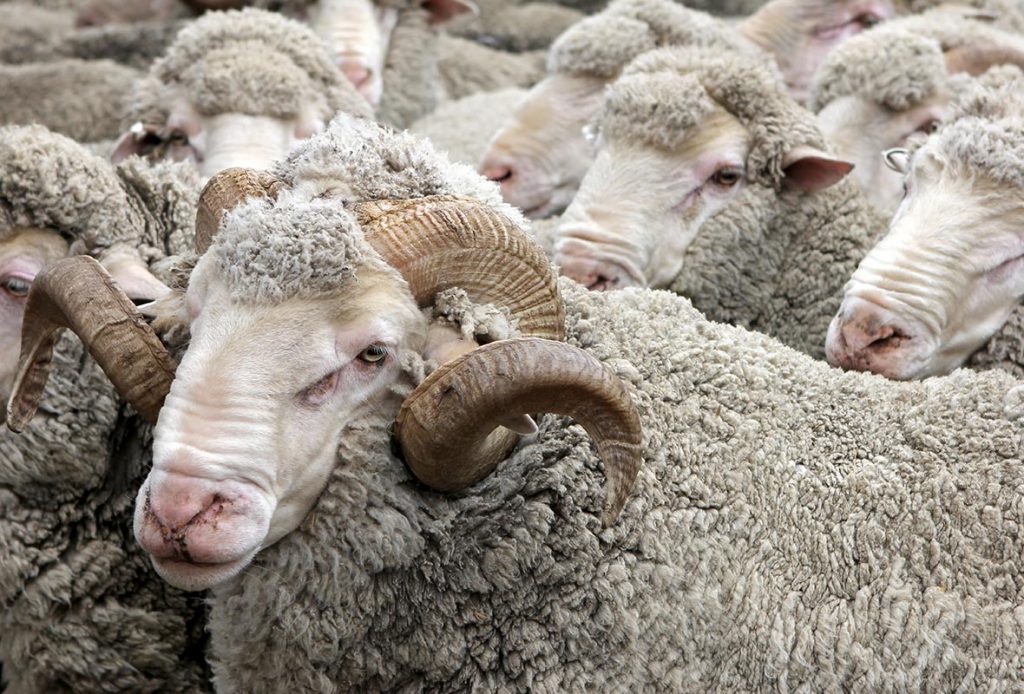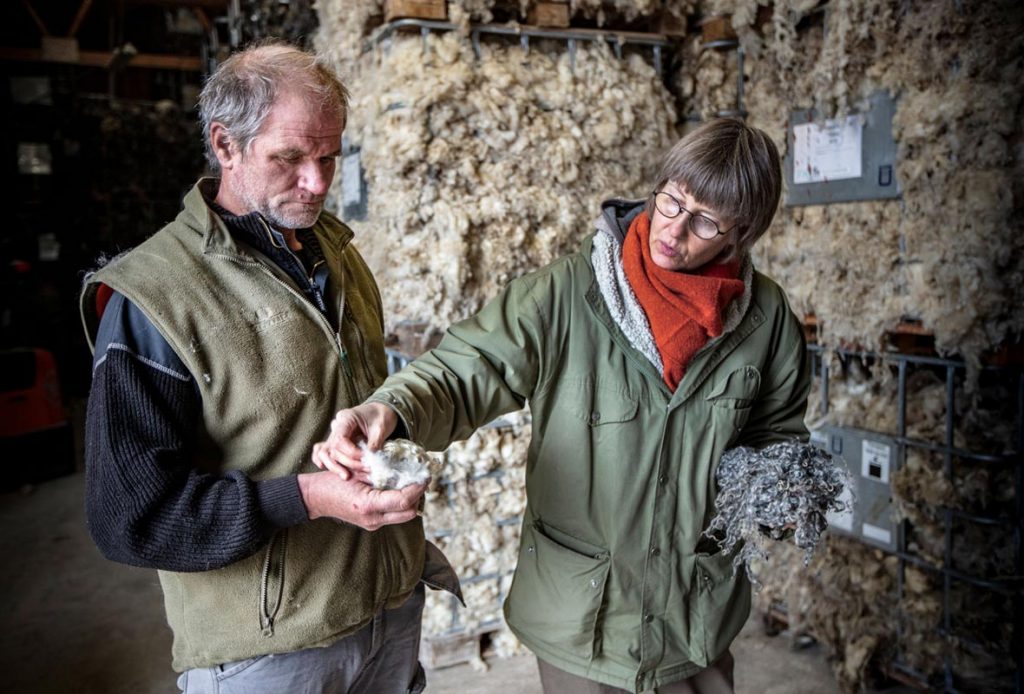Soft, durable, moisture wicking, odour resistant and warming - what more could we possibly want? Sustainability of course.
We love wool here at Fjällräven. And for a ton of different reasons. Apart from its extremely functional properties, we are able to source it in ways that make a lot of sense from a sustainable perspective. Recycled wool, surplus wool from Swedish sheep farmers or 100% regeneratively produced wool from New Zealand - are all part of our effort to reduce our environmental impact and produce sustainably.
Functionality of wool
You probably know that wool can keep you warm when you are cold, and cold when you are hot. It is a heat regulator, due to its ability to trap air between its fibres. That’s what gives wool its ‘cosy’ reputation. Wool also wicks moisture away from the body, and takes odours away with it. It is an incredibly functional material for outdoor garments which you want to last for a long time. It is also a very interesting material from a sustainability perspective. But it is important to be careful when sourcing wool and cautious about the kind of wool that we choose to use. That is why we have several different types of wool in our wool programme. All for different reasons.
But it is important to be careful when sourcing wool and cautious about the kind of wool that we choose to use. That is why we have several different types of wool in our wool programme. All for different reasons.
SAYS, CHRISTIANE DOLVA
Head of Sustainability
Traceable wool

In 2014 we launched our Down Promise - we use only ethically sourced, fully traceable down in all our products. In 2015, we started looking into how we could achieve that with our wool products as well. As Christiana Dolva explains “We can’t talk about the sustainability of our garments, without knowing about the welfare of the animals, the land use practices and economic viability of the farms we source from.” As we worked with yarn suppliers - it was not possible to trace the wool back to a specific or even group of farms. Christiane adds “In order to have wool which can comply with our strict criteria, we need to know the home of the sheep.” So we knew we had to change how we worked.
Our progress in traceability includes our partnership with New Zealand based ZQ wool - they accredit and work with farms across New Zealand, Australia and South America and ensure wool supply, quality and integrity for a variety of brands across the globe. But above all else, ZQ Wool’s main goals are about ensuring animal welfare, and environmental and economic sustainability. We get a certificate from ZQ Wool with all the names of the farms where our different types of wool come from, this includes a tracking number going all the way back to the farm. As Johanna Mollberg, Product Developer at Fjällräven, says “The farmers know their buyer and they know that we commit to their wool and treat it with respect. We all share the same vision and love for wool. And, of course, a love for the sheep and the land they live on.”
At Fjällräven we have a very strict animal welfare criteria for animal derived material. Further progress in this area means that we do not work with any farms practising mulesing - the painful practice of the removal of an area of wool bearing skin. Due to the way wool is commonly traded, it’s been extremely difficult to develop a fully-traceable global wool supply chain. As Erik Blomberg, the Head of Innovation at Fjällräven says, “Our goal is that all wool we buy is traceable, some wool types has been fairly easy to source while others have been harder. We aim to have all our wool products traceable by Fall Winter 2021.”
Re-Wool

We also have two different types of wool that are about recycling and reusing material. Wool is a brilliant material - too good to go to waste. Which is why we work with re-wool - recycled wool - from old products or off spill from production that can become great new products. Using traditional Italian craftsmanship, the recycled wool is colour-sorted, shredded and then blended with other colours to get a unique nuance. Finally, we mix the yarn with polyester or polyamide for extra strength. This process means we both minimise waste, and use less virgin wool in the production process. In fact, wool manufacturers have been using this method in Italy for hundreds of years. But it wasn’t until relatively recently that they called it recycling. It was actually one of our designers, Thomas Håkansson, who took the initiative and brought up the idea to get involved. As Thomas says, “I thought it was interesting, so I brought it up with the team and everyone thought it was a good idea. We have really strict quality criteria, so we had to ensure the fibres were good enough. But once that was confirmed it made perfect sense to go head.” As we are always looking for ways to reduce our environment footprint, recycled wool sounded like something we should look into. Read the full story on re-wool, and how we partnered with traditional Italian craftsmen to reduce waste, here.
Recovered Wool

Recovered wool is an initiative which was born out of the fact that wool in Sweden is thrown away quite a lot. This disturbed us, as we know the material is so good. That’s when we came up with recovered wool - this wool is a by-product of the meat industry that is collected from Swedish sheep farms, mainly on the island of Gotland, where the yearly shearing of sheep creates approximately 100 tons of wool. It is coarser, and doesn’t have the same fine fibres as the wool from wool-producing farms, but it still has the same properties that make wool a brilliantly functional material. After a lot of work and innovation, we were able to put some of that surplus wool to use in various Fjällräven jackets and parkas.
Brattlands Wool

The growing Brattlandsgården Collection, which is made entirely of fully traceable wool from Fjällräven’s own small scale, holistically managed wool project in Northern Sweden, is about more than just wool. Most sheep in Sweden are bred for meat, which usually means that their wool is quite coarse and stiff - not good qualities for wool clothing - and therefore, is thrown away. But the sheep at Brattlandsgården are a crossbreed between a traditional Swedish sheep and a merino sheep. As Erik explains “Brattland wool is wool from a fairly new sheep breed called Jämtlandsfår. This breed is a mix between Merino sheep and Svea sheep. The Jämtlandsfår has a fibre very similar to the Merino, but is better suited for the Scandinavian climate.” For us, our partnership with Brattland Farm is also a testing and learning ground. As Christiane says “For starters we’ve learned that wool and wool quality aren’t consistent. When we bought wool before, once it had already been spun into yarn, we had no idea about wastage. Now we know that lots of wool that’s sheared isn’t viable for clothing. On top of that, the whole design and buying team have pretty much become wool experts.” The project started because we wanted both to use Swedish wool, and to establish proper animal welfare across all our wool products. This is the first part of the journey for the collection of our Brattland products.
Wool as a material has a big future ahead. That’s not just because it has so many of those functional needs that we require, but also because it is very interesting from a sustainability point of view. It is durable, when treated correctly. It can be recycled. And when it is at the end of its life, it can be circled back into something new. As Christiane adds “We are strong believers in the material. When sourced properly, from farms that respect the animals in a way that can be regenerative to the environment, there is a positive impact that is super exciting to investigate even more.”
